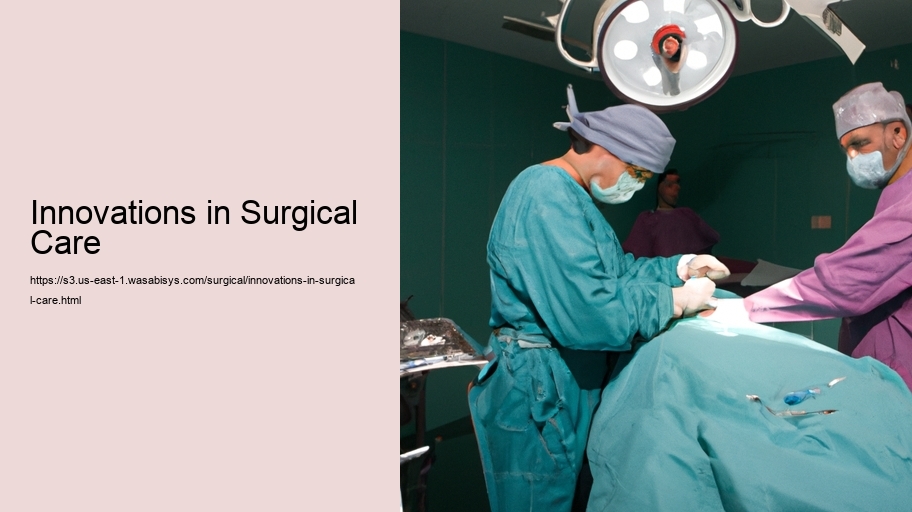Innovations in Surgical Care: An Essay
The landscape of surgical care has undergone a remarkable transformation over the past few decades, driven by relentless innovation and the pursuit of improving patient outcomes. As we reflect on the advancements made in this critical field of medicine, it becomes evident that these innovations have not only enhanced the capabilities of surgeons but also drastically improved the experiences of patients undergoing surgical procedures.
To begin with, the integration of minimally invasive techniques has been one of the most significant innovations in surgical care. Traditional open surgeries, which involve large incisions, have gradually been supplanted by laparoscopic and endoscopic procedures. These techniques utilize small incisions and specialized instruments, such as the laparoscope-a thin tube with a camera and light-that allow surgeons to view and operate on internal structures without the need for large incisions. The benefits of minimally invasive surgery are manifold; patients experience less pain, reduced scarring, shorter hospital stays, and quicker recoveries.
The advent of robotic surgery represents another leap forward in the field of surgical care. Robotic systems, such as the da Vinci Surgical System, extend the capabilities of surgeons by providing them with enhanced precision, flexibility, and control. These robotic assistants translate the surgeon's hand movements into smaller, more precise movements of tiny instruments inside the patient's body. Moreover, the three-dimensional, high-definition view that the surgeon receives surpasses what the human eye can see unaided. As a result, surgeries that were once highly complex and risky can now be performed with increased accuracy and safety.
Computer-assisted surgery (CAS) is yet another innovation that has refined surgical procedures. CAS employs preoperative and intraoperative imaging, along with computer software, to create a virtual representation of the surgical field. Surgeons can use this detailed information to plan the surgery meticulously and navigate surgical instruments with extreme precision, significantly enhancing the outcomes in orthopedic, neurologic, and ENT surgeries.
Another groundbreaking innovation in surgical care is the development of tissue engineering and regenerative medicine. These fields hold the promise of repairing or replacing damaged tissues and organs through the use of scaffolds, biologically active molecules, and cell therapy. This approach could revolutionize transplant medicine and the treatment of degenerative diseases by reducing the reliance on donor organs and mitigating immune rejection issues.
In the realm of postoperative care, advancements in pain management and rehabilitation have also greatly improved the surgical journey for patients. The use of multimodal pain management techniques, which involve a combination of medications and therapies, allows for more effective pain control with fewer side effects than traditional opioid-centric approaches. Enhanced recovery after surgery (ERAS) protocols have been developed to standardize and optimize the perioperative care of patients, leading to better outcomes and faster recoveries.
The future of surgical care continues to be shaped by innovations in areas such as gene editing, nanotechnology, and artificial intelligence (AI). Gene editing techniques like CRISPR could potentially correct genetic defects before they manifest as diseases, negating the need for surgical intervention. Nanotechnology promises the development of nanorobots that can perform surgical tasks at a cellular level. AI and machine learning have the potential to revolutionize surgical planning and intraoperative decision-making by analyzing vast amounts of data to provide real-time insights and predictive analytics.
In conclusion, the innovations in surgical care over the past several decades have been nothing short of extraordinary. From the widespread adoption of minimally invasive techniques to the futuristic potential of gene editing and nanotechnology, these advancements have reshaped the surgical field. They have made surgery safer, more effective, and less burdensome for patients. As we look to the future, it is clear that the continued evolution of technology and medicine will further enhance the efficacy and accessibility of surgical care, ultimately leading to better health outcomes for people around the world. The relentless pursuit of innovation in this field is a testament to the dedication of the medical community to saving lives and improving the quality of life for patients everywhere.
